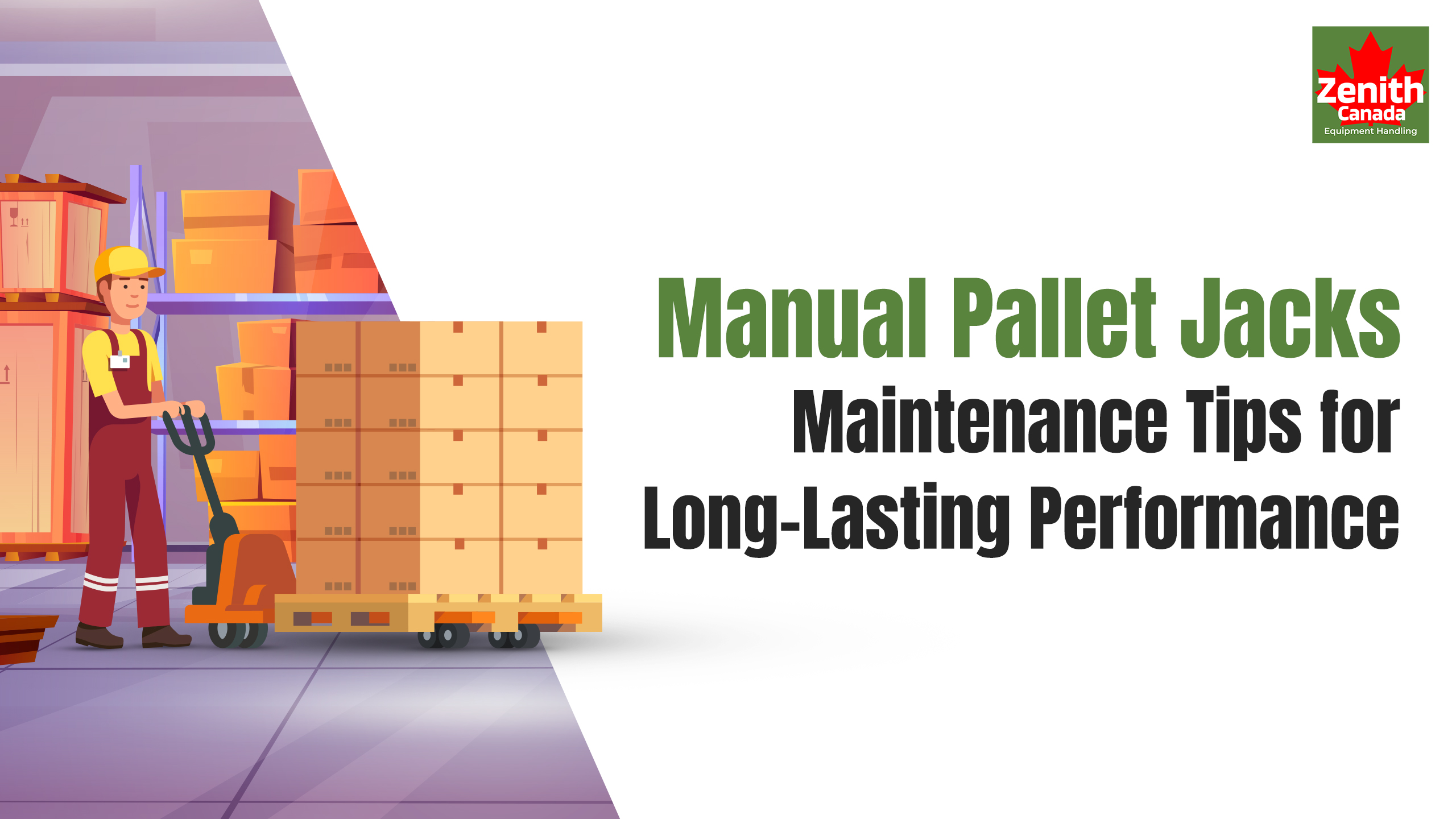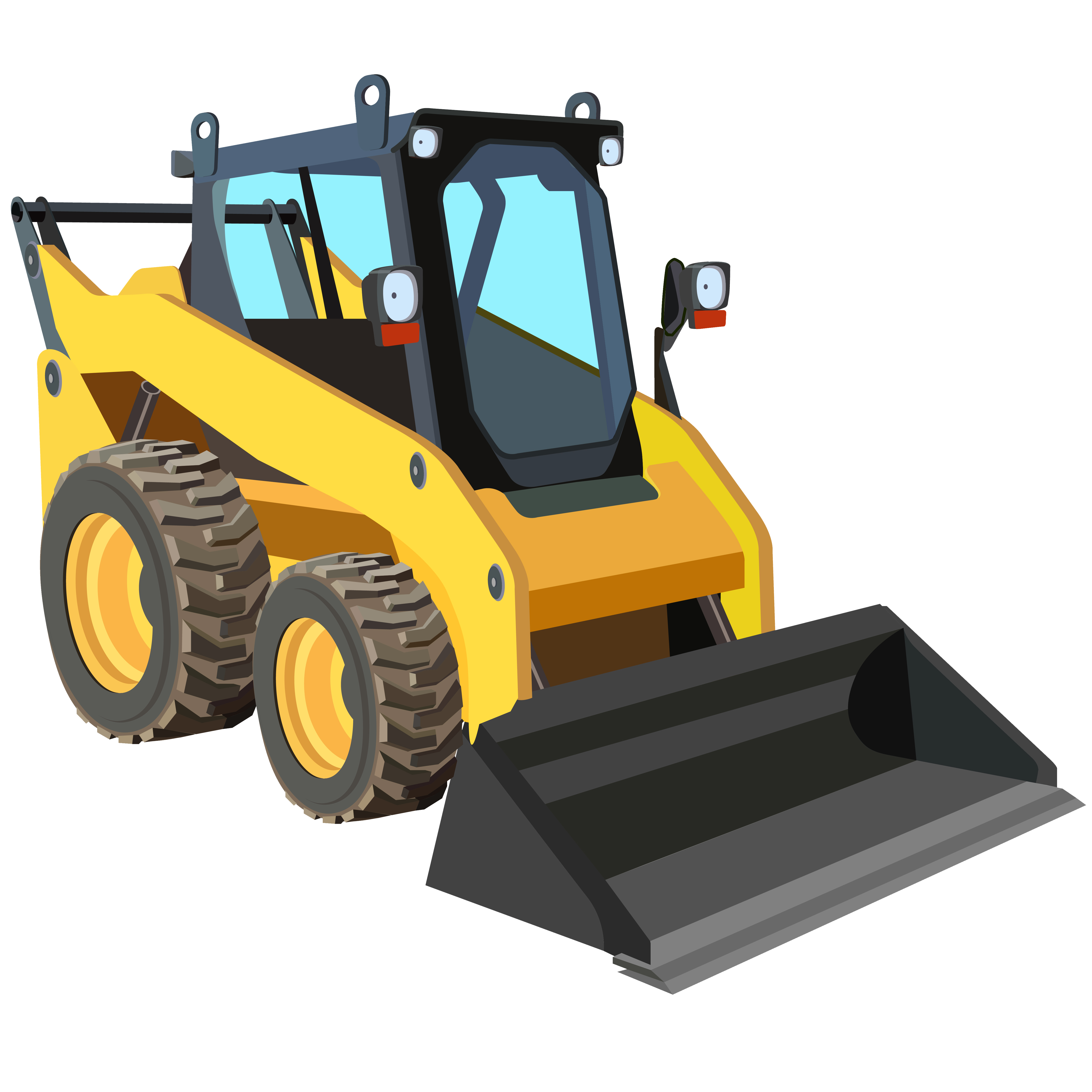Call or WhatsApp today for a free quote : +1 (416) 660-5054

Manual Pallet Jacks: Maintenance Tips for Long-Lasting Performance
Moving heavy pallets within distribution centers and warehouses requires too much physical effort. But manual pallet jacks have truly made the work easier and less tiring. With varied load-handling capacity, they can transport multiple pallets together from one location to another. Plus, they ensure complete safety and protection for the items, ensuring no damage.
Being such a crucial element of the machinery inventory, you cannot leave it unattended and expect to deliver the same performance. After all, manual pallet jacks are also made of mechanical and electrical parts that sustain considerable wear and tear after repeated use.
That’s why implementing a proactive maintenance routine is crucial. Whether it’s daily inspections or monthly health checkups, you have to care for your equipment. Only then you can extend its service lifetime and ensure it delivers optimal performance in all situations.
Having said that, we have compiled detailed information on the maintenance tips of manual pallet jacks here for you. Additionally, we have also discussed a few problems that may arise with this equipment and the most effective troubleshooting techniques.
Why Does Manual Pallet JackS Maintenance Matter?
You must be wondering why proactive maintenance is so crucial even after purchasing a premium-quality manual pallet jack. To help clarify your doubts, we have briefly illustrated the benefits it puts forth on the table.
- Regular maintenance routines prevent sudden breakdowns and failures of the machine. As a result, injuries can be prevented at your workplace and your employees can operate it safely.
- When you inspect the braking systems and wheels of the pallet jacks regularly, identifying problems will become easier. Addressing them on time will prevent tipping and improve the load control feature.
- A proactive maintenance routine will involve applying proper lubricants to the mechanical components. This way, manual pallet jacks can function smoothly without suffering from frictional wear and tear.
- Preventive maintenance is much more cost-effective than the costly repairs required. In other words, you won’t have to bear financial burdens for repairing the broken equipment parts if you properly maintain it.
- Routine inspections will help you detect and troubleshoot the common problems with a pallet jack. It will further reduce the risks of sudden breakdowns and minimize downtime.
- Maintenance routines will extend the lifespan of the pallet jacks, ensuring they continue to deliver optimal performance for years to come.
Daily & Weekly Maintenance Checklist
Daily Inspections (Before use)
- You need to inspect the equipment for any visible damage like worn-out parts, cracks, whirring sounds on start, and so on.
- Check if the wheels of the manual pallet jacks are in their optimal conditions or have suffered significant wear and tear. Ensure there is no crack in the wheels and the tire pressure is proper.
- Inspect if the hydraulic system is working properly or not. If not, the pallet jack won’t be able to lift all the pallets properly, even if the overall weight hasn’t exceeded the standard load-bearing limit.
- Additionally, you should check if the gear system, steering handles, and the braking system are functioning optimally or not. Otherwise, it will become difficult for the operator to maneuver the pallet jack properly.
Weekly Maintenance Tasks
- A weekly maintenance routine will involve applying a high-quality lubricant to the mechanical parts of the manual pallet jacks. This will include the pivot points, wheels, and axles.
- Check if the nuts and bolts connecting the mechanical parts are tightened properly or not. If you find some of them to be loose, tightening them at the earliest is of utmost importance.
- The hydraulic fluid reservoir should be inspected every week. It will help you detect if any sludge or residue has accumulated and get it cleaned on time.
Monthly and Seasonal Maintenance Tips
Monthly Checks
- Check if the manual pallet jacks has cracked or worn-out wheels. If yes, get them replaced with new ones having premium quality. Also, ensure the new wheels are compatible with the equipment to avoid any further breakdown.
- You also need to check whether the hydraulic seals are in place or not. Sometimes, they can come loose and cause fuel leakage, which will further reduce the overall efficiency of the equipment.
- Inspect the braking system for any underlying problem that may have been missed during daily routine inspection. If the brakes are tight or take longer to respond, maneuvering and controlling the manual pallet jacks will become troublesome.
Seasonal Deep Maintenance
- You need to run a complete hydraulic system inspection every season, especially before peak times. It will help you identify any critical problem with the system and get it fixed on time.
- The pivot points need to be cleaned since sludge accumulation can cause them to overheat and prevent smooth movements. Ensure they are properly lubricated after thorough cleaning.
- In months when you don’t need the manual pallet jack, store it properly so that no damage is caused to the mechanical and electrical components.
Common Manual Pallet Jacks Issues & How to Fix Them
- One of the most common issues with manual pallet jacks is the improper functioning of the lifting system. It mostly happens if the hydraulic fluid is low in volume and can’t generate enough power. So, check its level in the reservoir tank and refill if necessary.
- If you find the wheels make squeaky noises or they get stuck after being operated for a few times, lubricating is the best solution.
- Sometimes, operators find it difficult to lower the handles easily. If that’s the case, try adjusting the release valves or inspecting for fluid leakage.
- Refilling the hydraulic oil or replacing the seals can prevent any further loss of the fluid.
Best Practices for Long-Lasting Performance
- Do not lift pallets weighing more than the recommended load capacity of the manual pallet jack.
- If it’s the first time you are using the equipment, ensure your operators receive proper training.
- When storing the equipment when not in use, choose a dry place to prevent rusting and corrosion due to humidity.
- Ensure to adhere to the specific maintenance guidelines as suggested by the manufacturer, especially for monthly and seasonal inspections.

Conclusion
Caring about the manual pallet jacks is no longer a luxury but instead a necessity. Whether it’s reduced service lifespan or disruptions in your business operations due to sudden downtime, you no longer have to be worried. But for this, you should invest in a premium-quality professional maintenance service to avoid any recurring problems. This is where Zenith Canada enters the picture with their expertise in handling pallet jacks of different types.

